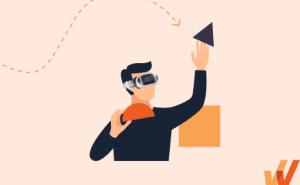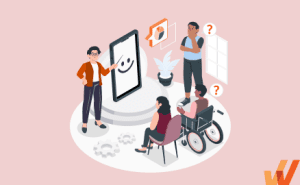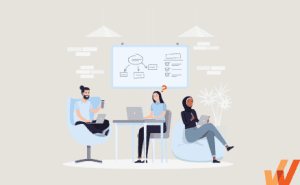Vicarious Learning
Vicarious learning occurs when individuals gain knowledge by observing the experiences of others, focusing on the outcomes of their actions. This type of learning emphasizes understanding the consequences—whether positive or negative—without needing to perform the task firsthand. For example, an employee may avoid making a mistake after witnessing a coworker face repercussions for similar errors. Vicarious learning is particularly effective in environments where risk mitigation and decision-making are crucial, as it helps individuals adapt their behavior by internalizing lessons from their surroundings.
Observational Learning
Observational learning involves acquiring new skills or behaviors by watching others perform tasks or demonstrate processes. Unlike vicarious learning, the focus is on modeling and imitation rather than the outcomes of others’ actions. This method is essential for learning new abilities, as it allows individuals to replicate behaviors they have seen, fostering skill development without formal instruction. For instance, a student may learn to solve math problems by carefully observing a teacher’s demonstration on the board. Observational learning plays a key role in education, workplace training, and social interactions.
Kinesthetic Learning
Kinesthetic learning is a hands-on approach that relies on physical activity and direct engagement with tasks to facilitate understanding and retention. This type of learning activates muscle memory and requires learners to actively participate in the learning process. For example, a mechanic in training may master engine repair by physically working with car parts rather than reading manuals or watching tutorials. Kinesthetic learning is especially effective in fields requiring practical application, such as sports, arts, and technical trades, where experience and repetition are vital for success.
The Four Phases of Vicarious Learning
Vicarious learning has four phases: attention, retention, reproduction, and motivation. Let’s break down each below.
1. Attention
The first phase of vicarious learning is attention, or what elements of the demonstration the learner chooses to focus on. Overly complex, dull, or lengthy demonstrations impact learners’ attention, causing them to lose interest or focus on the wrong demonstration elements.
2. Retention
During the retention phase, learners store the observed behavior to use later. Trainees might think of the behavior as an IF/THEN equation or a cognitive map, or they may mentally rehearse how to perform the task.
3. Motoric reproduction
The next phase requires the learner to reproduce the behavior using the information they gathered and retained. Trainees attempt the task themselves, then adjust based on feedback and continue practicing.
4. Reinforcement and motivation
The final phase of vicarious learning is reinforcement and motivation, or whether the behavior will be performed and adopted. This phase depends on outcomes, consequences, expectations, and rewards.
Examples of Vicarious Learning in the Workplace
Whether we recognize it or not, we’re learning vicariously all the time—both inside and outside the workplace. However, there are a few ways to increase the opportunities for vicarious learning for employees and team members.
Here are some examples of vicarious learning taking place in corporate settings:
1. Mentorship and job shadowing programs
Connecting junior employees with experienced team members can provide an inside look at the day-to-day responsibilities and expectations of more senior roles or positions in different departments.
Mentorships and job shadowing programs are a great way to train new employees, prepare team members for promotions, or equip individuals with the skills they need to take on more responsibilities at work. Examples of this include sales coaching and onboarding buddy programs.
2. Reviewing real-life case studies and webinars
Case studies or demonstrational webinars show how other companies, teams, or clients implemented a specific solution to achieve a desired outcome. Reviewing this type of content can provide solutions or ideas on how to solve similar problems or achieve similar results.
3. Peer-to-peer learning
Peer groups allow individuals to learn in a collaborative environment. Peer-to-peer learning might include role-playing scenarios, group demonstrations, or simulation training. Working as a team pushes trainees to share experiences, provide feedback, and find creative solutions.
Challenges of Vicarious Learning
Here are three of the biggest limitations of implementing vicarious learning strategies in the workplace:
- Limited control over learning: This method of training doesn’t work for everyone. Employees and trainees might experience demonstrations differently or struggle to pick up on important details or concepts. Because vicarious learning depends on the learner acquiring and retaining the right information, it can be difficult to control what they focus on or remember.
- Passive learning: If trainees aren’t engaged with demonstrations or presentations, they become passive learners. Simply observing without retaining key details and information could prevent them from remembering the specific steps to replicate the behavior when the time comes.
- Unequal access to learning opportunities: What trainees learn vicariously is entirely dependent on the experiences they’re exposed to. The involvement of peer groups, demonstrators, and mentors will all influence the learning opportunities an individual is given, meaning trainees might get vastly different learning experiences.













